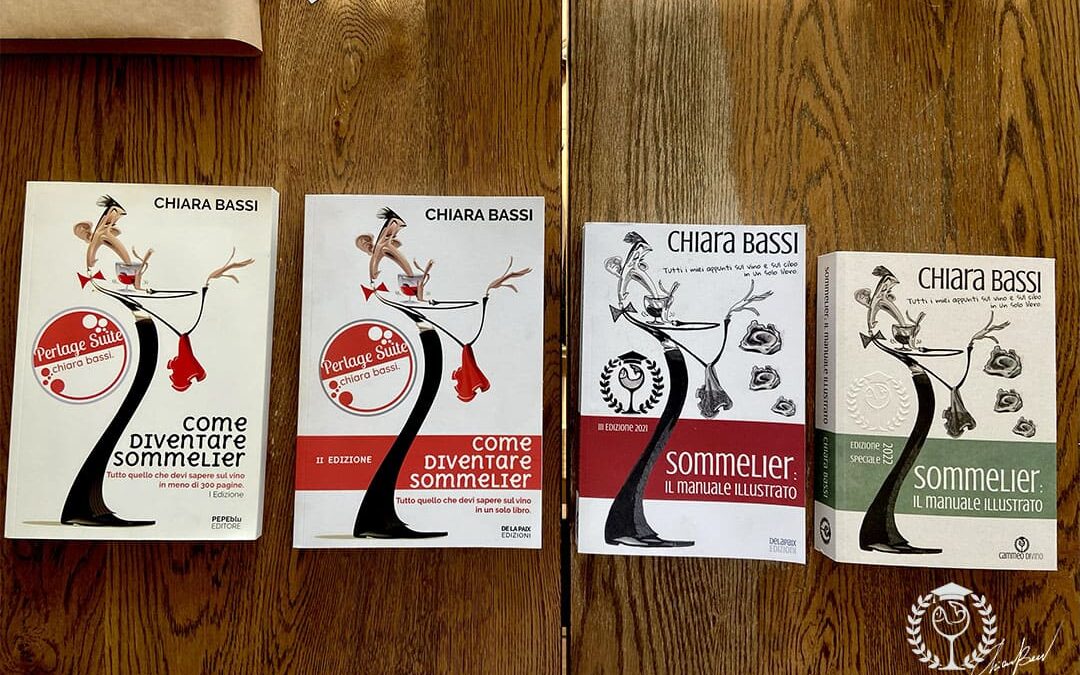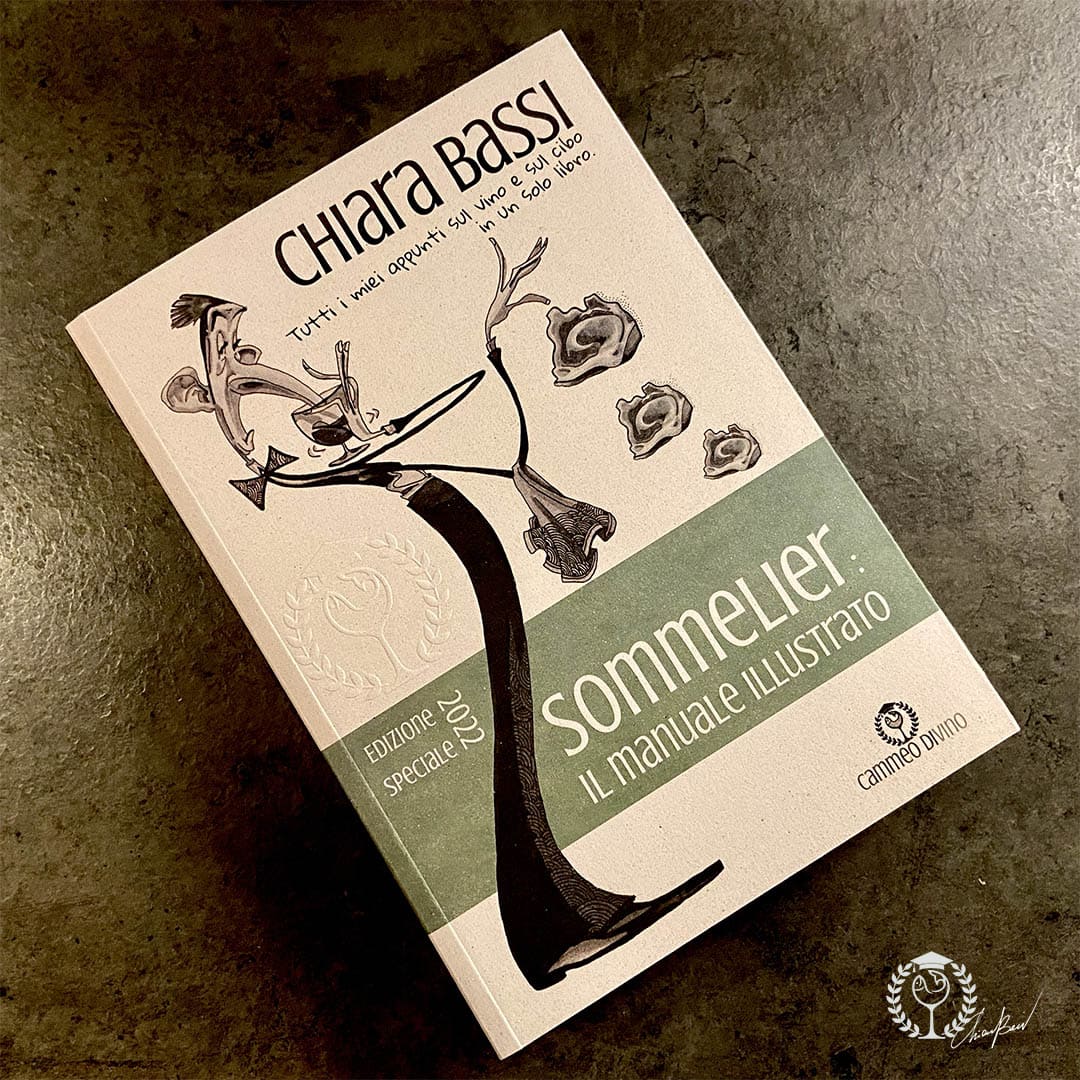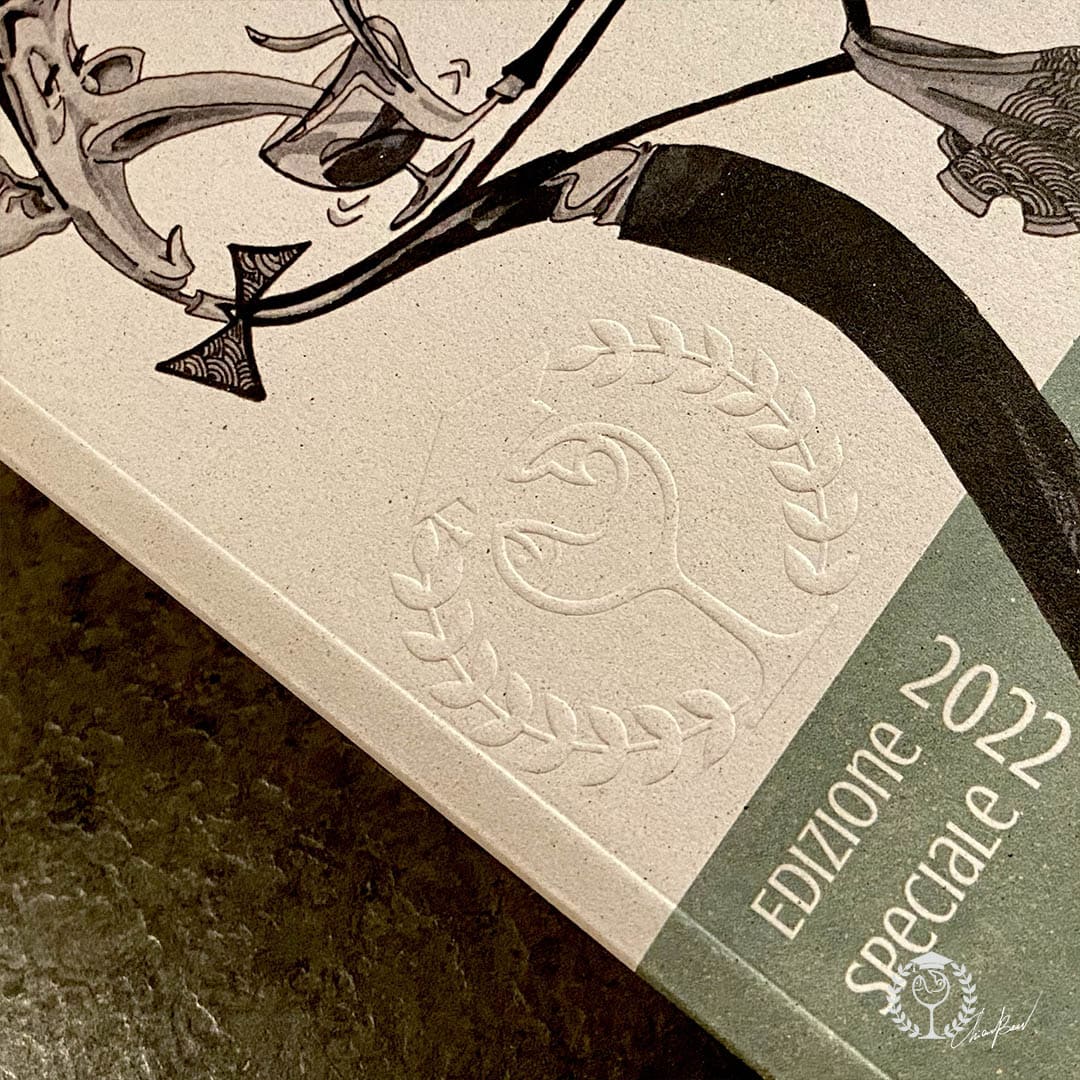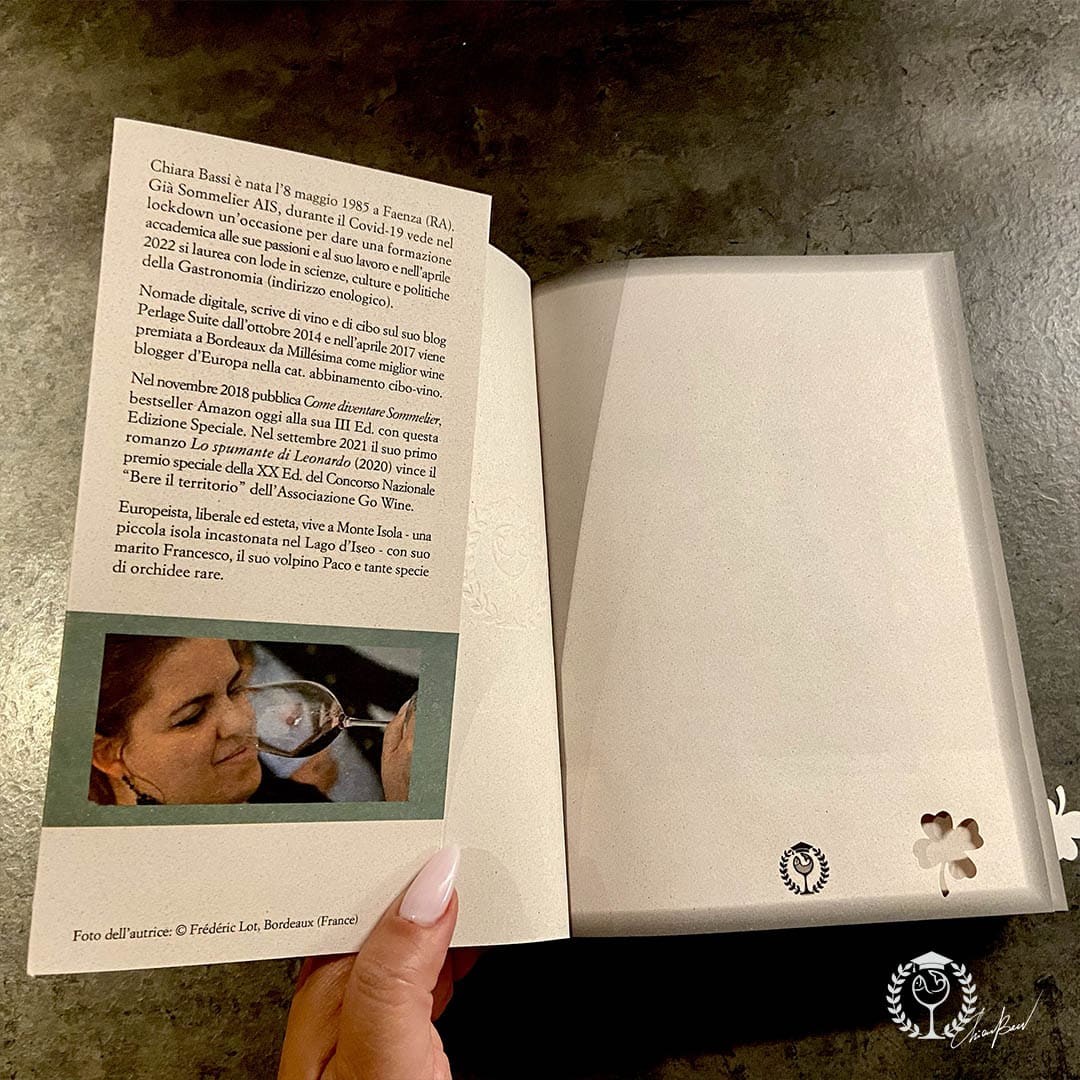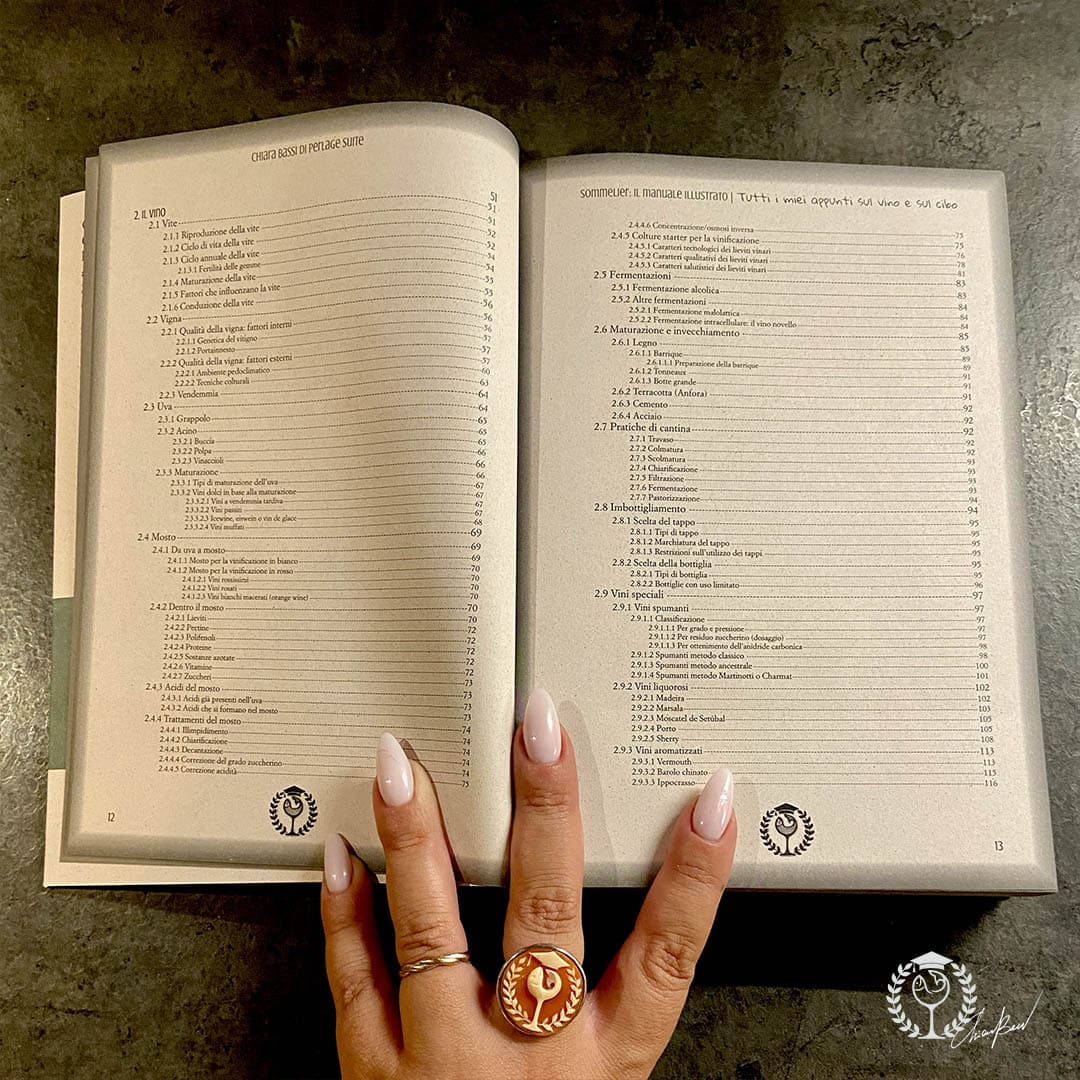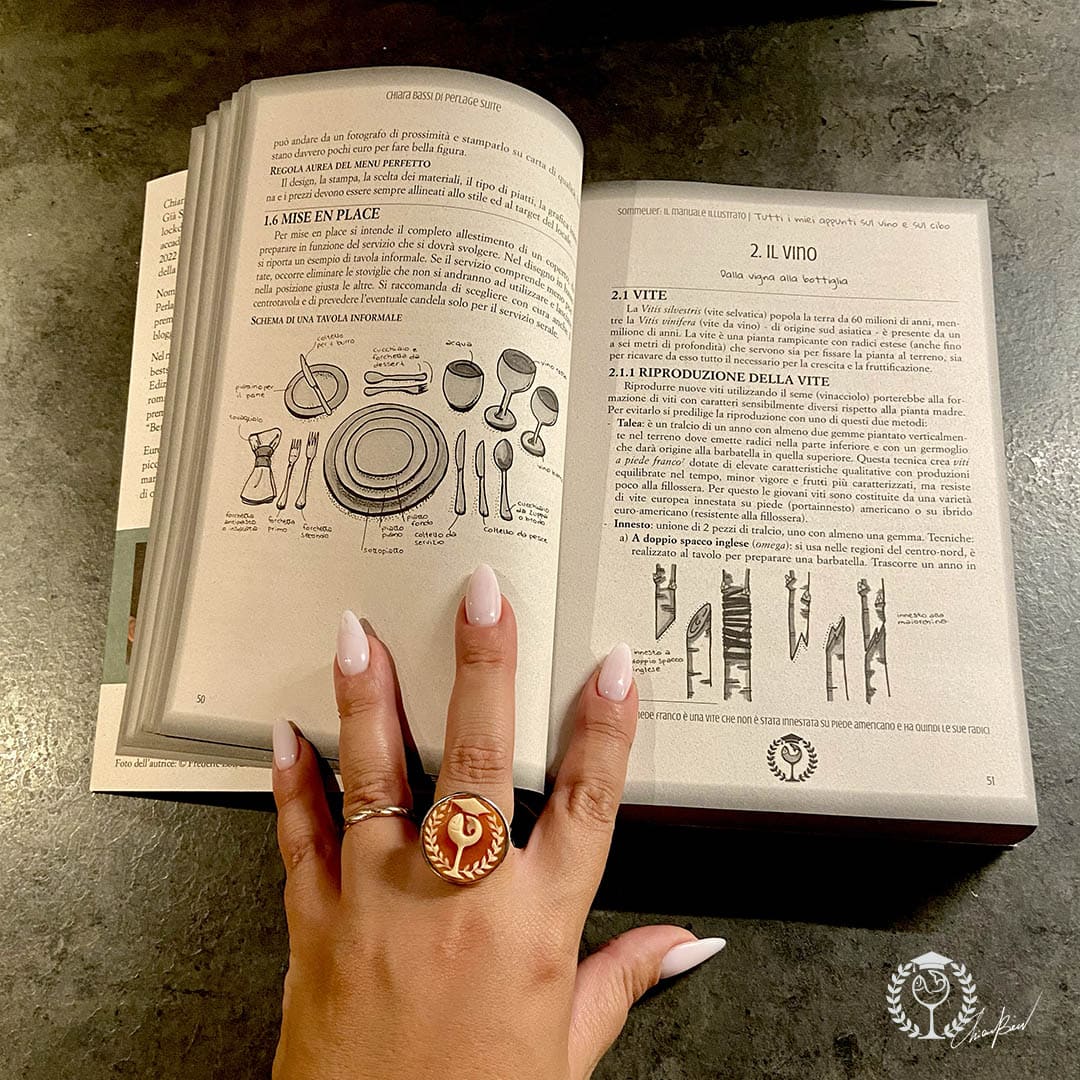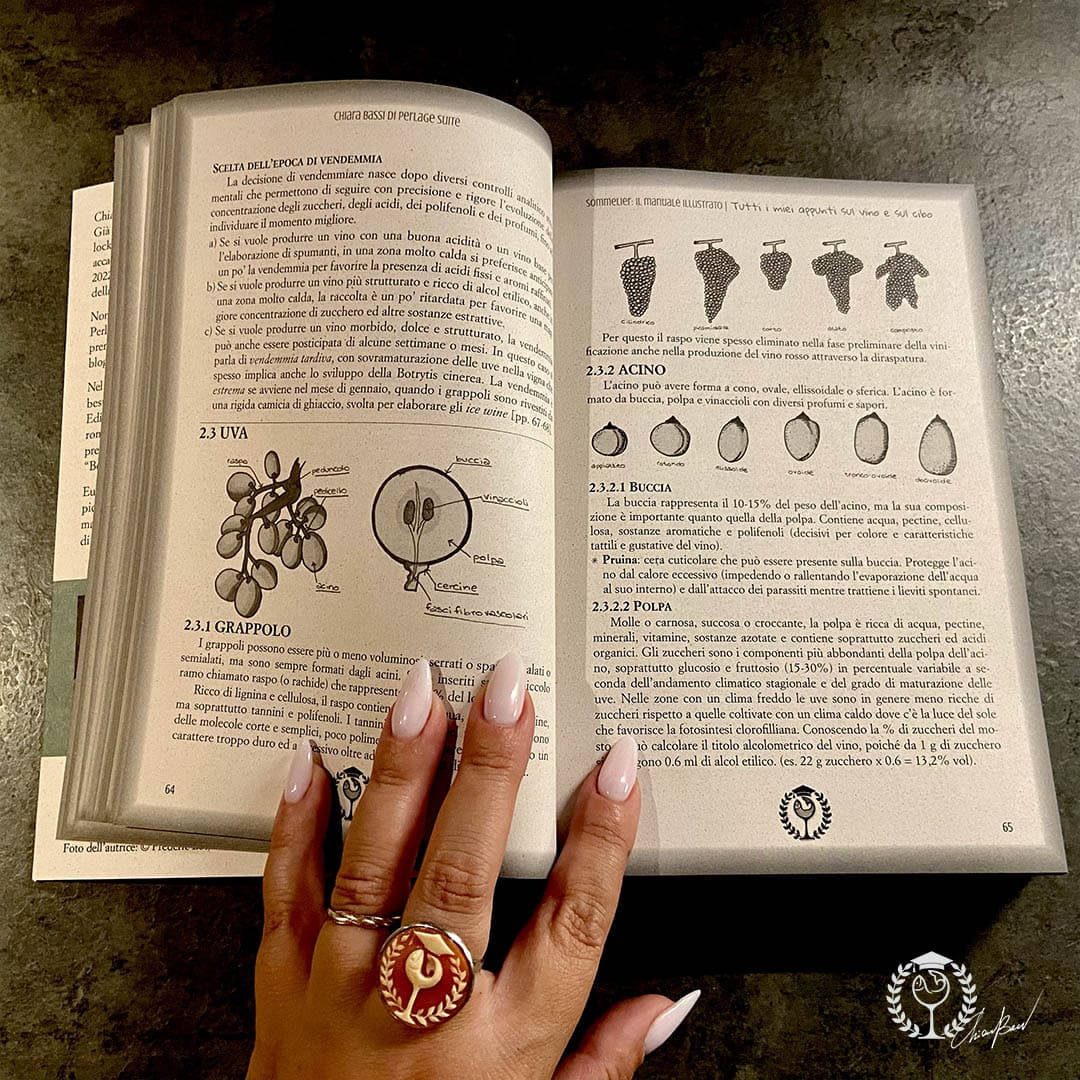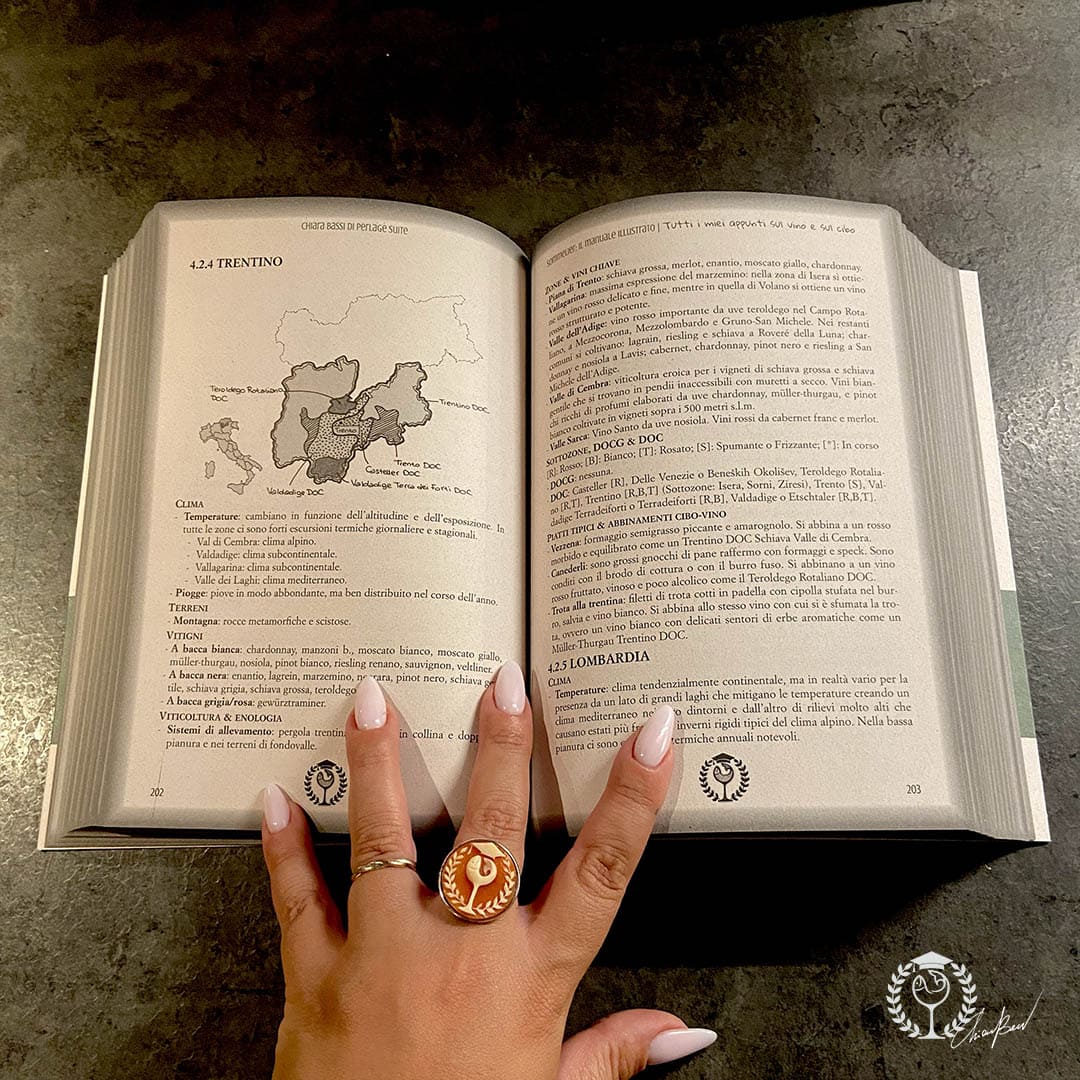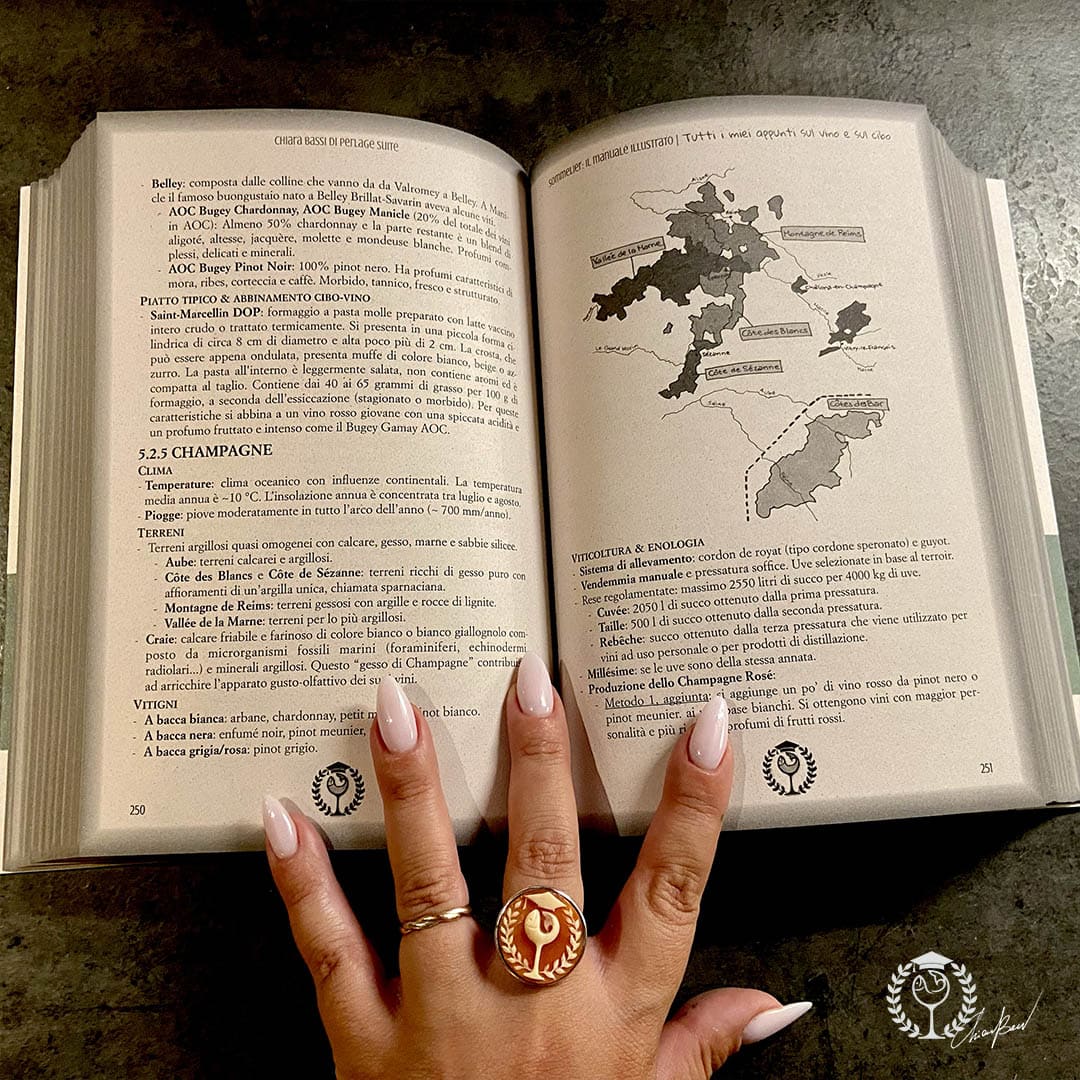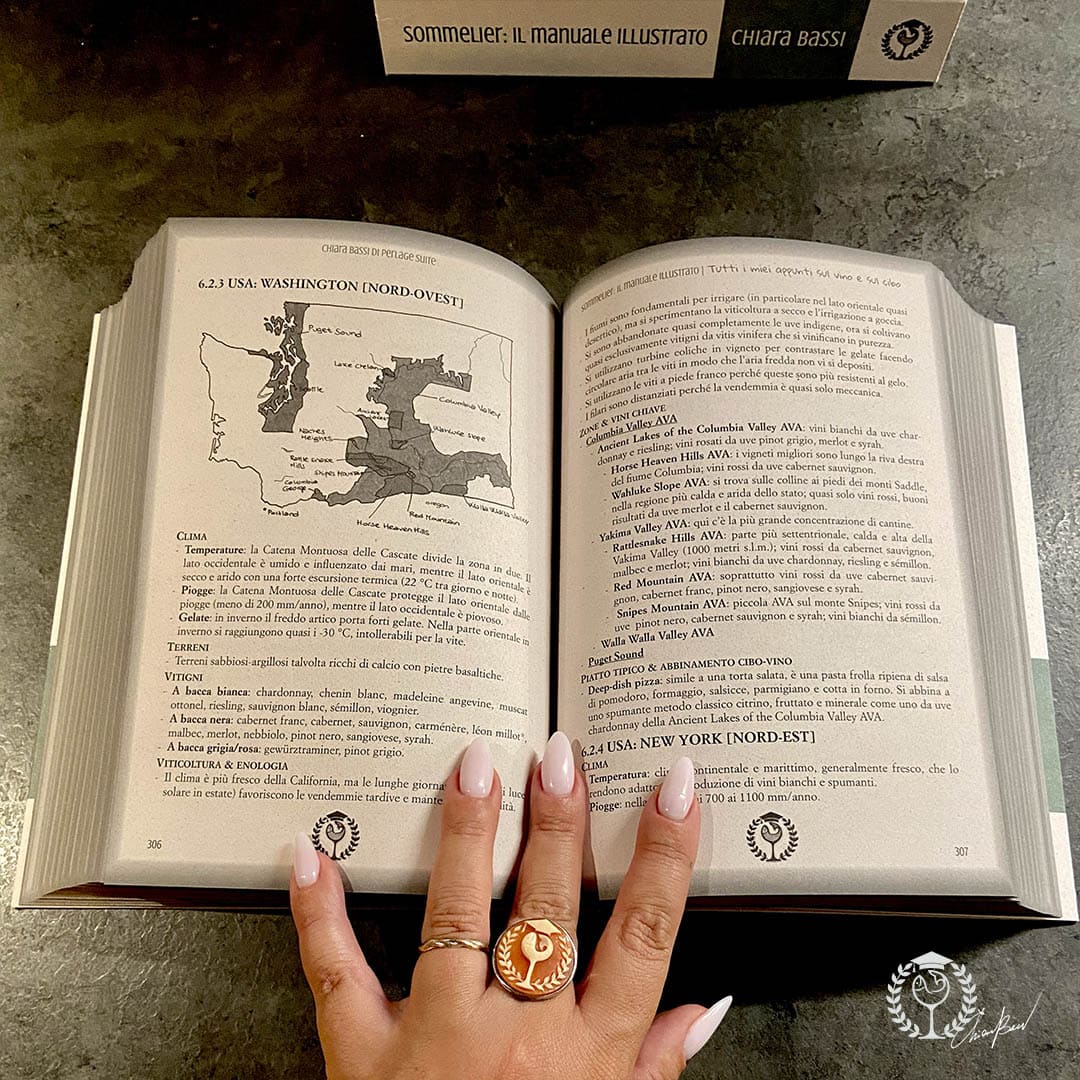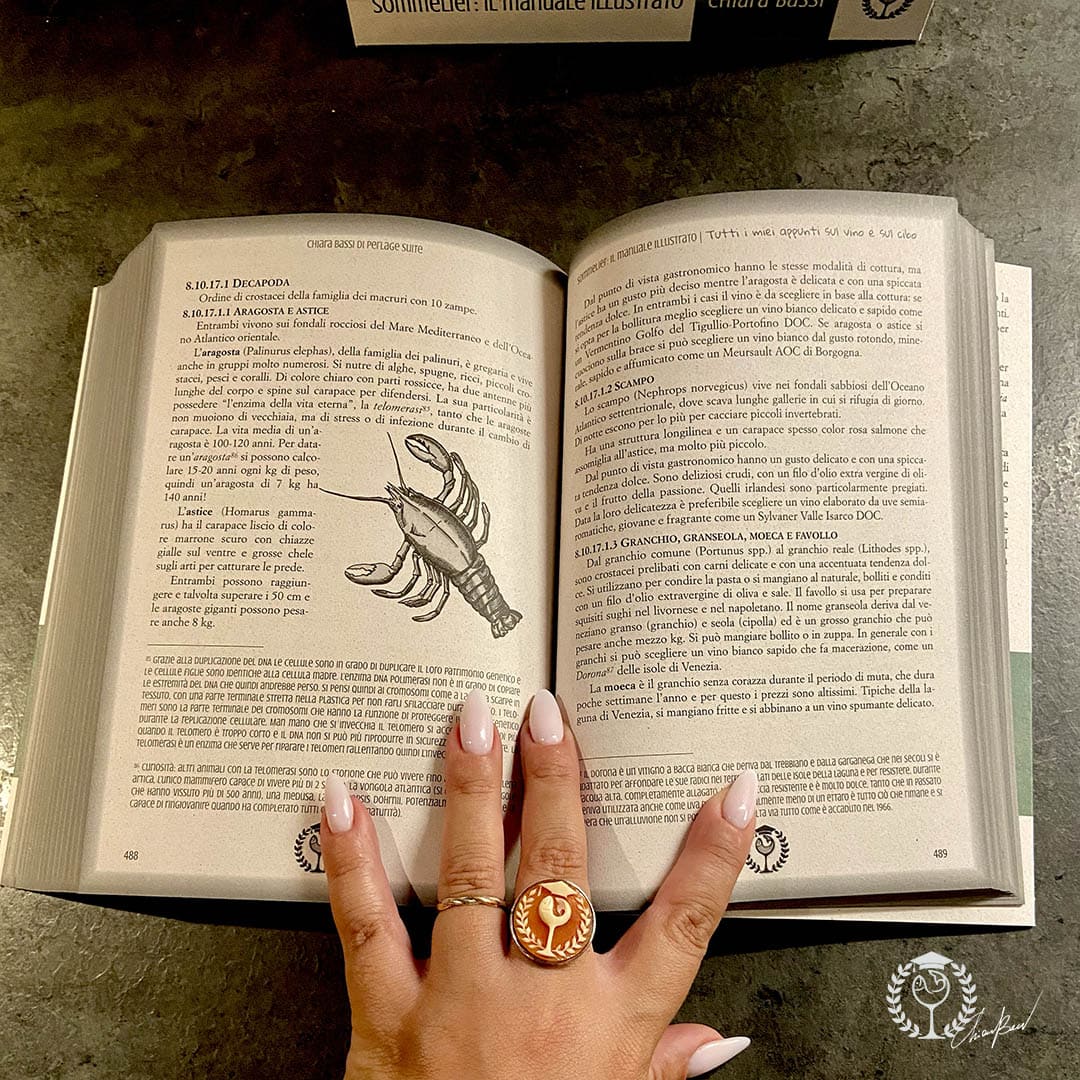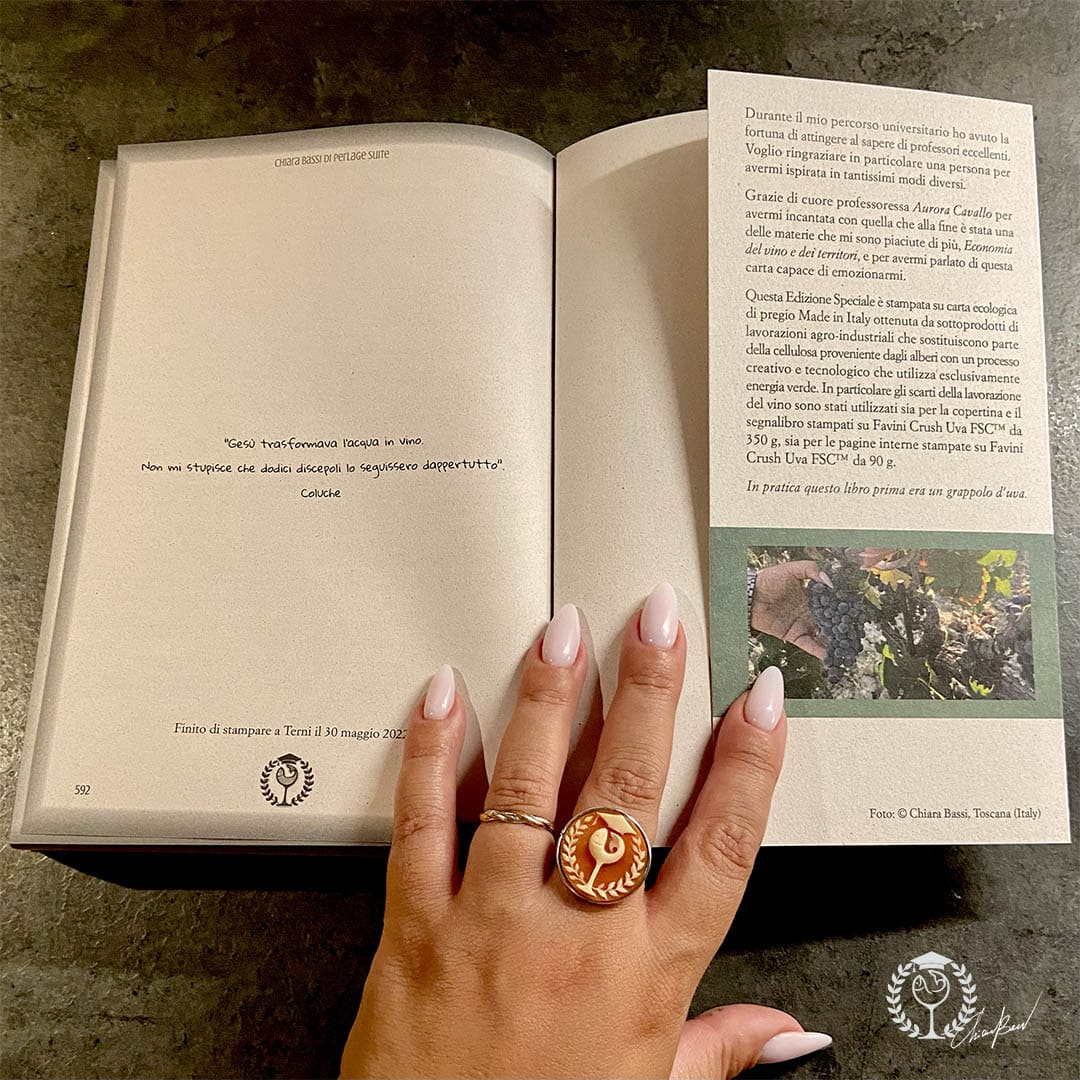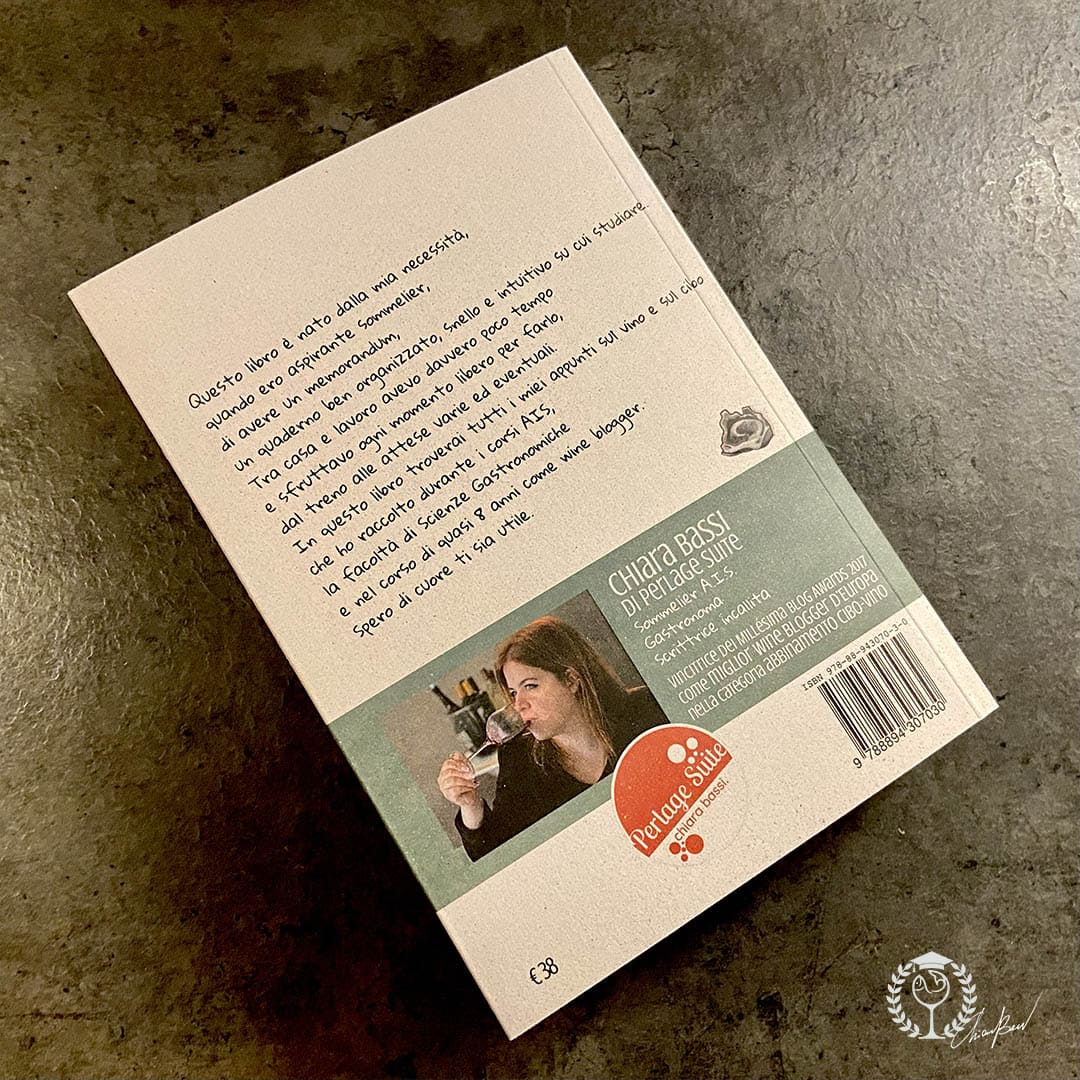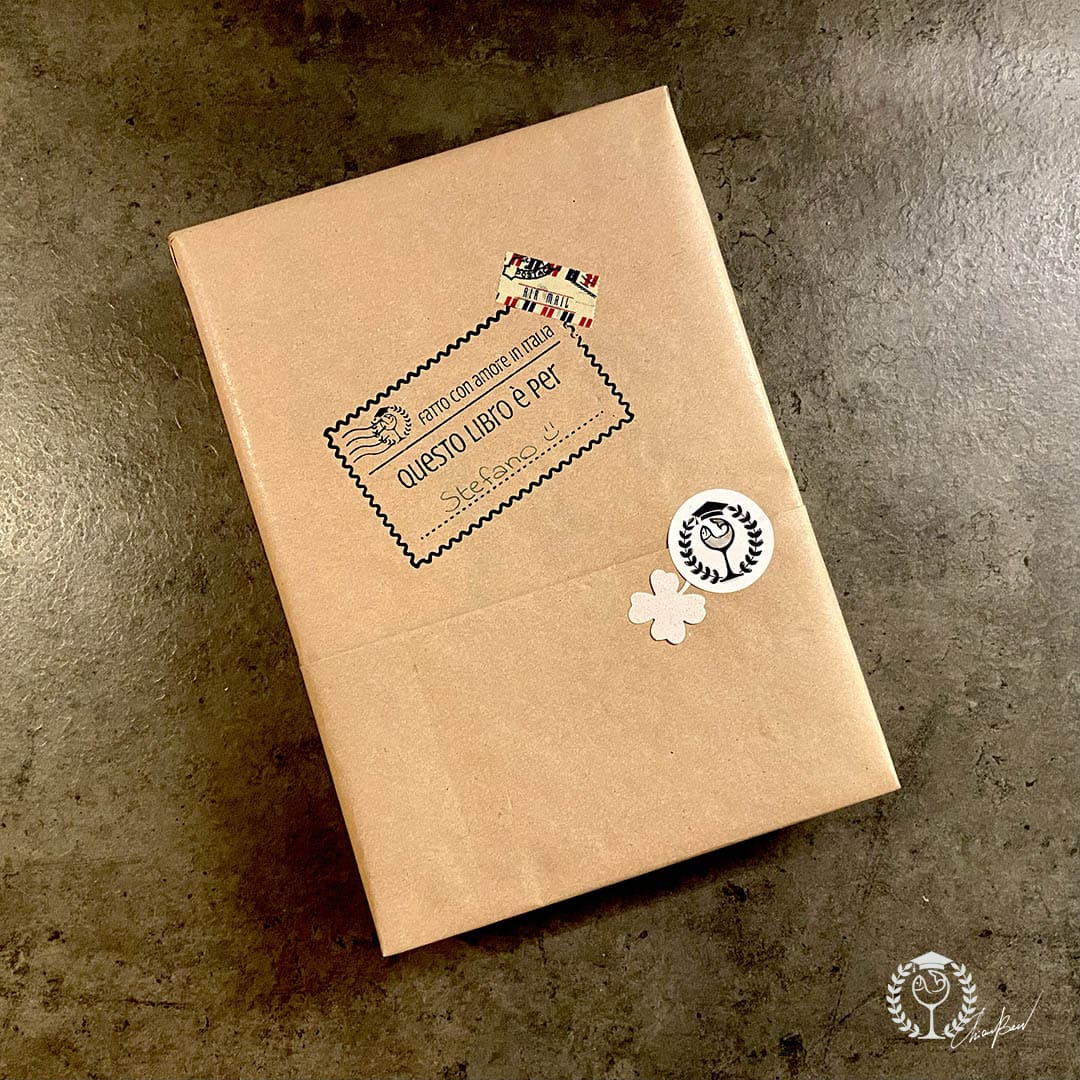It is almost 8 years since I opened this wine blog with the intention of making my notes from the sommelier course I was attending at the time. Since high school, I have always been very good at both organising my notes and at 'distilling' them, i.e. concentrating in very few pages only what is really needed without getting lost in flights of fancy. Oh God, to say very few pages for a book that actually has 592 pages I know it sounds almost absurd... but in my book Sommelier: the illustrated manual there really is everything you need to know to overcome theAIS sommelier examination or any other association.
AIS sommelier exam: fear of failing?
Before I tell you what's new in this Special Edition 2022, I want to quote you a paragraph from my introduction in the book about the fear of failure:
We are all actors in a society that asks us to always be perfect, that inculcates in us from an early age the fear of diversity, imperfection and failure. I have read more than one email from trainees terrified of taking the final exam for fear of failing it. Sure, you might fail. So what? Resize every exam in your life for what it actually is: just an exam. It's nothing serious or scary, it's just a 'game' where you can win or lose. If you win you rejoice, if you lose you can start a new game. Fear freezes and getting stuck is frightening.
So, first of all, lighten up! If you have arrived on this page because you are attending a sommelier course and/or prepare to support thesommelier examinationTake a deep breath and don't worry. If I still haven't convinced you, I recommend you also read this article "AIS exam rejection: how to avoid it?“.
After this introduction, I want to reveal the first big difference between the Special Edition 2022 and the previous editions of Sommelier: the illustrated manual: it's about the paper! The last course I took before graduating in Gastronomy sciences, cultures and policies was Economy of wine and territoriesi with the very good Professor Aurora Cavallo. Well, it was absolutely one of the subjects I loved the most: Circular economy, Made in Italy and the wine business came up with both theoretical insights and practical examples. And, among these, was the famous Favini paper mill which produces the extraordinary paper Crush Grapes.
AIS sommelier exam: the 1st reason to study in my manual is you!
You, who already bought my book in one of its previous editions and wrote me a private message or left a review to tell me what you thought of it... thank you. I listened to you carefully and treasured it because this book is designed to make you study less and better, i.e. to save you a lot of time while studying and to make use of all the moments when you can do it. These optimisations with which the book was designed by me, as well as others you have suggested over the years, are the beating heart of my work as they protect your time, and time is what you have most precious.
These optimisations have been made at all levels, the latest being new graphics designed for easy reading, with a new font suggested by Giancarlo Ferrucci of Arcadia Communication Agencya reader of mine from the third edition whom I hope to meet soon in person because I think he is an exquisite person.
You can now subscribe to my newsletter or scroll down the page to continue reading the article!
I had been fixated on using this paper since February, but the war in Ukraine tried to make me demur: about 25,000 sheets were needed to print this first run of the Special Edition 2022 and just couldn't be found. I could have resigned myself and even spent almost half as much per book, but I didn't: I literally broke the balls of an unreasonable number of people and took the result home. And it has to be said that at Favini they went out of their way to help me, so thank you.
AIS sommelier exam: the 2nd reason to study in my manual is organisation!
I studied design and composition for 10 years between high school and university and for me organising the contents of this book was a serious matter that cost me a lot of revisions over the four editions. In this Special Edition 2022, I reorganised the second chapter dedicated to viticulture and oenology - the heart of any sommelier course - and I am really proud of the result. In addition, I have delved into non-wood containers, perhaps sensitised by Umberto Cosmo of Bellenda with its beautiful event Blend 2021 and added a few paragraphs on fermentations and many clarifications on wine yeasts.
AIS sommelier exam: the 3rd reason to study in my manual are the illustrations!
When the first two editions came out, a lot of people wrote to me that it would be nice if the book sommelier had contained some explanatory drawings. So I thought I would sketch using Indian ink pens of various thicknesses, brush and jar, Japanese calligraphy brushes and greyscale manga markers. Ever since high school, I have loved drawing in Indian ink... in fact, you could say that I almost only used this technique! I must say that I really enjoyed doing these drawings, even though I am of course not a professional illustrator. But this is my sommelier course notebookso that's good!
I must say that even though the pages have increased considerably, the book has gained in readability and clarity, so I am very happy I did! I hope you enjoy them!
AIS sommelier exam: the 4th reason to study in my manual is maps!
What an anguish wine-growing areas are, and what a nightmare DOCs and DOCGs are! The maps, at least for me who is not lucky enough to remember all the names off the top of my head, are really essential. In general, I think they are useful for anyone with a good visual memory... and for those who don't have one... well, they are still useful to understand where the various appellations are! In the first two editions I had only made the maps of Italy by drawing them with the trackpad of my MacBook, but by the third edition I had already redone the maps of the Italian wine zones by hand and added the foreign ones made again with my MacBook. These were useful, but not exactly beautiful...
You can now buy my book Sommelier: the illustrated manual or scroll down the page to continue reading the article!
Book "Sommelier: the Illustrated Manual" Special Edition 2024
All my notes on wine and food in one book.
€ 38,00 VAT included!
In stock (can be backordered)
So for this Special Edition 2022 I also redid all the wine maps of the world by hand and added three maps of France and in particular Bordeaux, Burgundy and Champagne! They are much much better!
Maps of the world's wine-growing areas have been maniacally made... how? I don't know about your AIS books, but in mine many world maps are not there. To make them, I wrote to the various control bodies in the various countries and got help. For Hungary, I asked my colleagues who won the Millésima Blog Awards with me... and I think I did a good job! Greece, California and the Republic of South Africa were real nightmares... but both the OPAP, AVA and WO holders were thankfully very kind. I really hope you will appreciate this immense work... also drawing! I traced the maps with the overhead projector and drew on them with India ink.
AIS sommelier exam: the 5th reason to study in my handbook is food!
Although this is a handbook dedicated to sommeliers and those taking a sommelier course and not a specific book on food and wine pairing (which is currently in the pipeline and will be out by this Christmas 2022), the in-depth coverage that has been given to cooking, traditional dishes and ingredients is truly remarkable. I am particularly proud of the in-depth look at the fish part and the introduction of Novel Foods. If you read them, let me know what you think!
AIS sommelier exam: the 6th reason to study in my handbook is sustainability!
The Special Edition 2022 is printed on premium Made in Italy ecological paper obtained from by-products of agro-industrial processing that replace part of the cellulose from trees with a creative and technological process that uses only green energy. In particular waste from wine processing was used for both the cover and bookmark printed on 350 g Favini Crush Uva FSC™ and the inside pages printed on 90 g Favini Crush Uva FSC™..
Crush is FSC™ certified, made with EKOenergy, GMO-free and contains 40% of post-consumer recyclate. The product and production process are protected by a European patent. By using agro-industrial waste and EKOenergy, the carbon footprint is reduced by 20%. While a paper book is already more environmentally friendly than a digital book, the choice of this paper and printing, albeit at a higher cost, in Italy has further reduced the impact on the environment.
The life cycle of a paper book is then extremely longer than an electronic device, and continuous recharging of batteries is not necessary either. Without going into detail, To produce and transport a paper book consumes, on average, about 3 kg of CO2, whereas for an e-book the consumption is more than 40 kg of CO2.
AIS sommelier exam: the 7th reason to study in my manual is that it is designed just for you.
No, that's not really true... it's actually meant for me! But I had the same needs and problems as you when I was taking the sommelier course... so who can understand you better than me? Why should you have to study in any book when you can study in a book that is exactly what you need?
When I attended the sommelier course I was literally desperate because I had little time and there was too much stuff to study. Too much! I have a knack for remembering numbers, but I am completely bad at names. I wished I could study anywhere, especially on the train or the metro. But can you imagine carrying around the books of the various associations every day, which are beautiful, but heavy and dispersive? And then what did I carry with me every day, a trolley for 8/10 books? Or did I carry a big, heavy backpack with only a couple of books in it and hope to choose the right books in the morning?
So I did a study on the portability of the book and, from the first edition to date, it has gone from 17 x 24 cm of the first edition to 15 x 21 cm (take a sheet of the kind you usually use - A4 size - and fold it in half) of this Special Edition. Of course, it has 592 pages, and 90g pages to boot - not the tissue paper of some books! However, by choosing a 350g paper cover, the weight has been limited to only 0.85 kg. In less than a kg you therefore have everything, but really everything, you need to know to pass the AIS sommelier exam. And I assure you that it fits into practically any bag, no need for a backpack!
AIS sommelier exam: the 8th reason to study in my handbook is care.
I personally package your book in a gift pack using recycled kraft paper, eco tape and paper ribbon. The four-leaf clover is made from the first page, which I stamp by hand. Then I stamp it and write your name. And, if you ask me in an order note, I am happy to add a dedication as well. If you then write to me, at the end of the sommelier course and after you have passed the ais exam, to ask my advice on what to uncork and let me know that we are colleagues... I will be very happy. You are special to me.
I am very happy to have presented you with this Special Edition 2022 of my book Sommelier: the illustrated manual! If you have something to ask me or want to tell me what you think, feel free to write a comment below!
Good luck, from the bottom of my heart, for your sommelier exam. Drunk the wolf, mind you!
Cheers 🍷
Chiara

